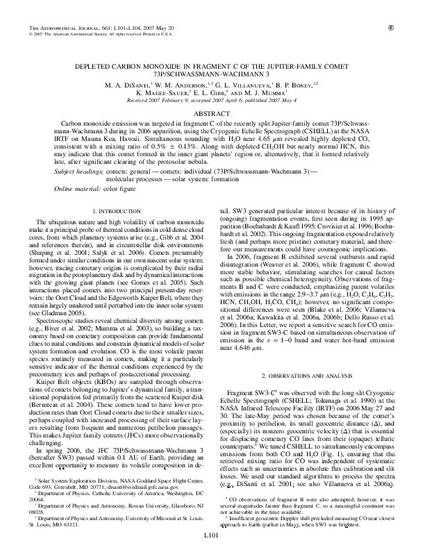
Article
Depleted Carbon Monoxide in Fragment C of the Jupiter-Family Comet 73P/Schwassmann-Wachmann 3
The Astrophysical Journal
(2007)
Abstract
Carbon monoxide emission was targeted in fragment C of the recently split Jupiter-family comet 73P/Schwassmann-Wachmann 3 during its 2006 apparition, using the Cryogenic Echelle Spectrograph (CSHELL) at the NASA IRTF on Mauna Kea, Hawaii. Simultaneous sounding with H2O near 4.65 μm revealed highly depleted CO, consistent with a mixing ratio of 0.5% ± 0.13%. Along with depleted CH3OH but nearly normal HCN, this may indicate that this comet formed in the inner giant planets' region or, alternatively, that it formed relatively late, after significant clearing of the protosolar nebula.
Disciplines
Publication Date
May 20, 2007
DOI
10.1086/518716
Citation Information
M. A. DiSanti, W. M. Anderson, G. L. Villanueva, B. P. Bonev, et al.. "Depleted Carbon Monoxide in Fragment C of the Jupiter-Family Comet 73P/Schwassmann-Wachmann 3" The Astrophysical Journal Vol. 661 Iss. 1 (2007) p. L101 - L104 Available at: http://works.bepress.com/erika-gibb/44/
